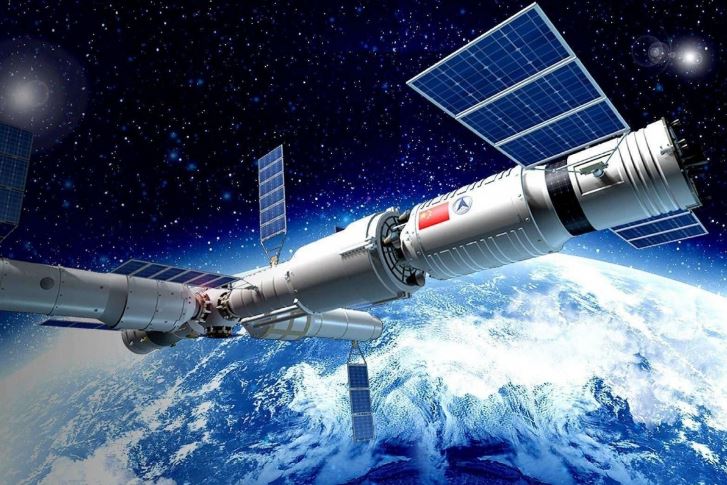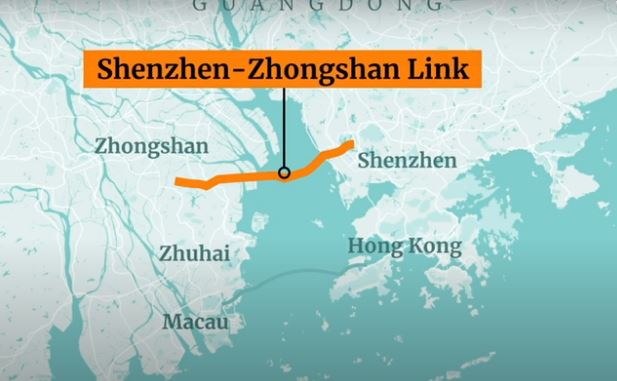
While the world is combating the pandemic, on the one hand, China is no exception; on the other hand, the world’s second largest economy is achieving the impossible in the space as well as undersea. O America, America, where is thy good with brotherhood, from sea to shining sea?
For space, China has made one step closer to building its permanent space station by launching several tests. China’s space station core module is called Tianhe (天和号核心舱), meaning literally “Harmony of the Heavens.” The Tianhe module is expected to be launched in 2021 on a Long March-5B rocket. And on April 24 China’s “Space Day,” the country marked its 50th anniversary of the first satellite launch with the announcement of the name for China’s first Mars Lander—Tian Wen-1 (天问一号), meaning literally “Questions to Heaven.” The name is taken from a long-form poem by Qu Yuan (屈原), a Chinese poet born in the 4th century BC. Qu Yuan was so highly regarded that China’s Dragon Boat Festival was dedicated in his honor on his death anniversary—the 5th day of the 5th lunar month. (The traditional holiday usually falls in the month of May or June in the Gregorian calendar.) The Tianwen-1 mission with the combined Mars orbiter and rover spacecraft is undergoing testing toward launch in July.
As for the undersea, as part of China’s 13th Five-Year Plan, construction of the Guangdong-Hong Kong-Macau Greater Bay Area (GBA) is in full swing. This project traverses over the busiest waters in South China, home to 70 million plus people. In October 2018, China officially opened the world’s longest sea bridge, 34 miles linking Hong Kong, Macau and the mainland Chinese city of Zhuhai. The GBA project is also regarded as an economic lifesaver for Hong Kong, ever-polarized by Beijing’s tougher rule. In April 2020, construction began for the first section of what is expected to be one of the world’s widest undersea tunnels. This part-bridge-part-tunnel transport link will stretch for 15 miles connecting the Chinese mainland cities of Shenzhen and Zhongshan in the Pearl River Delta. When completed by 2024, the undersea tunnel will handle 8 lanes of traffic.

With perseverance and willpower, even a foolish old man can move mountains. This is what Chinese people are told since childhood about a well-known Chinese fable. And this April, Chinese engineers from Huawei and China Mobile were building against all odds the world’s highest 5G base station on the Chinese side of Mount Everest. In the meantime, 53 Chinese surveyors were scaling the world’s tallest peak to measure its height following a difference of four meters with Nepal’s measurement (8,848 meters). (For the US reader, 8,848 meters is roughly 29,029 feet. 4 meters is roughly 13.13 feet.)
On the other side of the Pacific, the United States is watching but rather not collaborating with China in space and in medicine. The arrogant and fearful incumbent administration has weaponized anti-China rhetoric. The Hawks in the Pentagon have succeeded in making the U.S. Space Force the sixth military branch and launching a big recruiting drive in 2020. The move has placed the US in a new space race with China, further strengthening the US-China space isolation spearheaded by former Congressman Frank Wolf of Virginia. Thanks to Rep. Wolf who sponsored legislation seven years ago, just before he retired, forbidding NASA from working with China and forcing it to reject China’s request for international partnership for a space station, and also thanks to the like-minded policymakers and military strategists in the incumbent administration, China is becoming more resolute to develop its home-made space program in order to overturn the fact that Chinese astronauts are banned from the International Space Station.
As for the latest, the White House has cut all research funding for the EcoHealth Alliance which has collaborated with a Wuhan lab in China on studying bat-borne-human-transmission coronaviruses.
Whether it is the construction of a space station, a 5G network, or the quest for a COVID vaccine, the stronger the US is pushing back against collaboration with China, the more relentlessly China is reaching out with other international partners and looking for opportunities elsewhere outside the US.
In the end, who is the loser? (By the way, “loser” is a word that is frequently used by the 45th President of the US.)
Global interaction and international collaboration are inevitable. As long as humans rely on undisrupted supply chains to make a living and to improve wellbeing, and as long as the corporate power is growing in American Capitalism (to some extent, it has overshadowed goverance), let’s face it. China is more of a strategic partner than a rival power to the US.
Confucian philosopher Mencius in the 4th century BC once said, “A gentleman pays attention of his own self-culture while cornered by chaotic circumstances, and endeavors to benefit the world when he succeeds.”(孟子曰:穷则独善其身,达则兼济天下。)
The US has long-standing traditions of democracy and judicial independence. Rather than finger pointing at other countries’ faults, the US can do better to honor our long-standing traditions and set an example for other nations. China cannot thrive without the partnership with the US, neither can the US progress by isolation. Amidst the battle with the pandemic, we, as a nation, are longing for leaders to put the well-known verse into action: “O America, America, God shed His grace on thee; And crown thy good with brotherhood, from sea to shining sea.”

